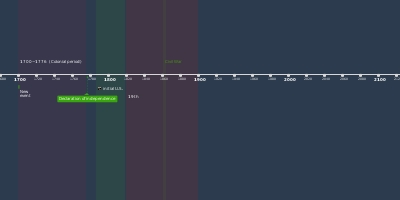Finance - Money and Banking (1 janv. 1869 – 1 janv. 1897)
Description:
During the period, a series of recessions happened. The recession of 1869 resulted from a stock market panic, which lowered stock prices 20% and briefly cut wheat prices in half. It was one of the shortest and mildest recessions in American economic history.Panic of 1873 created one of the worst and longest depressions in American history, seriously affecting every aspect of the economy and bringing the railroad expansion to a halt.The New York Stock Exchange closed for ten days. Of the country's 364 railroads, 89 went bankrupt, a total of 18,000 businesses failed between 1873 and 1875, unemployment reached 14% by 1876, during a time which became known in Britain as the Long Depression. Politically, the Democrats took control of Congress in 1874, the election of 1876 was deadlocked.
The end of the Gilded Age coincided with the Panic of 1893, a deep depression that lasted until 1897. Wheat and cotton farmers in the West and South were especially hard hit, and moved toward radicalism. President Grover Cleveland was forced to ask the Wall Street bankers help keep the Treasury liquid. Agrarian spokesmen William Jennings Bryan called for an inflationary policy of using cheap silver to effectively replace expensive gold. Bryan lost in a major political realignment in favor of the conservative pro-gold Republicans in the election of 1896.
Ajouté au bande de temps:
Date:
1 janv. 1869
1 janv. 1897
~ 28 years
